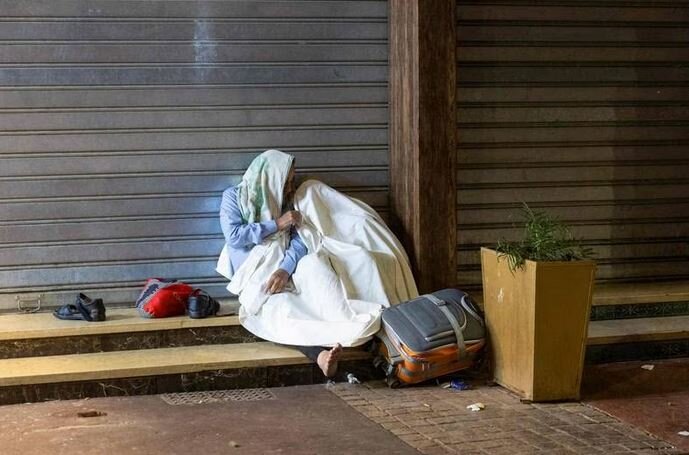Iran (IMNA) - Morocco’s state television reported the doubling of the death toll on Saturday morning from overnight, citing the Ministry of Interior. Of those injured, 51 were in a critical condition.
lapsed in the old city, a UNESCO World Heritage site. Local television showed images of a fallen mosque minaret with rubble lying on smashed cars.
The earthquake hit shortly after 11pm local time (22:00 GMT) on Friday evening, according to the United States Geological Survey (USGS).
The USGS estimates the epicentre of the earthquake occurred in the Atlas Mountains, some 75km (44 miles) from Marrakesh, the fourth largest city in the country.
Search teams frantically scoured collapsed buildings for those trapped.
“The Royal Armed Forces, local authorities, security services and civil protection … continue to mobilise and harness all means and capabilities in order to intervene, provide the necessary assistance, and assess the damage,” the interior ministry said.
Journalist Noureddine Bazine from Marrakesh described the situation as an “horrific night”.
“It was chaos the moment the earthquake happened, we’re still try to process what happened because it was so sudden,” she told Al Jazeera. “In Marrakesh, the most damage was in the old city because the buildings are prone to collapse because of their fragile state.”
Eid al-Tarazi, a professor of seismology in Jordan, told Al Jazeera “hundreds of aftershocks could happen”.

“People will need to stay away from the buildings that are not strong because they are prone to collapse. We expect the aftershocks could continue for three to four weeks,” he said.
The last major earthquake to strike Morocco occurred in 2004, killing more than 600 people. That temblor, dubbed the al-Hoceima earthquake, was positioned on an active plate boundary on the country’s northernmost coast, bordering the western Mediterranean Sea. It clocked in at a magnitude of 6.3.
An even larger earthquake struck neighbouring Algeria in 1980. Known as the el-Asnam earthquake, the magnitude 7.3 event was the strongest seismic activity the region had seen in centuries. Also originating in the Atlas Mountain range, it levelled houses, leaving 300,000 people on the street and at least 2,600 people dead.
Messages of support began to roll in from around the world on Saturday.
German Chancellor Olaf Scholz posted condolences on X, the platform formerly known as Twitter. Indian Prime Minister Narendra Modi, currently hosting the Group of 20 summit of the world’s largest economies, wrote, “India is ready to offer all possible assistance to Morocco in this difficult time.”
A UN spokesperson said “the United Nations is ready to assist the government of Morocco in its efforts to assist the impacted population”.

The last major earthquake to strike Morocco occurred in 2004, killing more than 600 people. That temblor, dubbed the al-Hoceima earthquake, was positioned on an active plate boundary on the country’s northernmost coast, bordering the western Mediterranean Sea. It clocked in at a magnitude of 6.3.
An even larger earthquake struck neighbouring Algeria in 1980. Known as the el-Asnam earthquake, the magnitude 7.3 event was the strongest seismic activity the region had seen in centuries. Also originating in the Atlas Mountain range, it levelled houses, leaving 300,000 people on the street and at least 2,600 people dead.
Messages of support began to roll in from around the world on Saturday.
German Chancellor Olaf Scholz posted condolences on X, the platform formerly known as Twitter. Indian Prime Minister Narendra Modi, currently hosting the Group of 20 summit of the world’s largest economies, wrote, “India is ready to offer all possible assistance to Morocco in this difficult time.”
A UN spokesperson said “the United Nations is ready to assist the government of Morocco in its efforts to assist the impacted population”.
Aljazeera


Your Comment